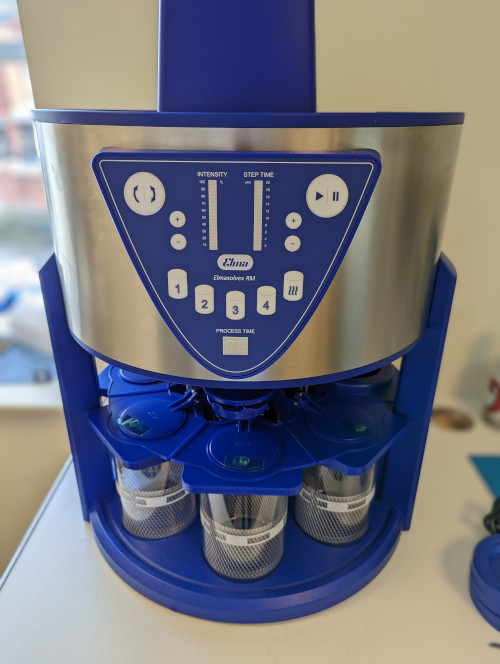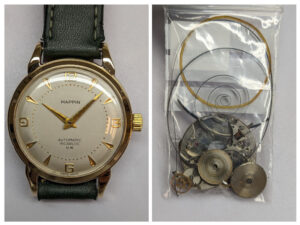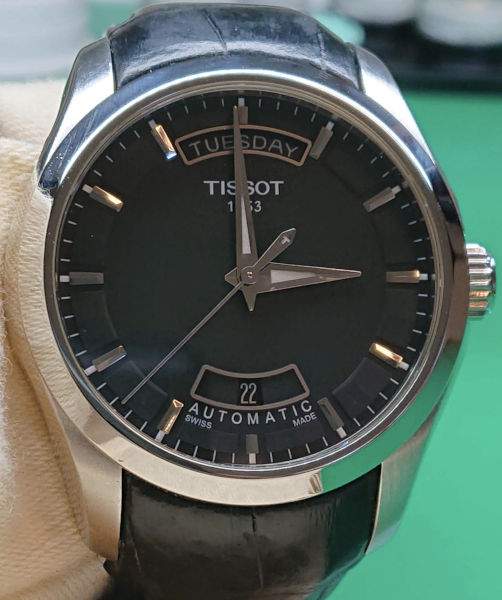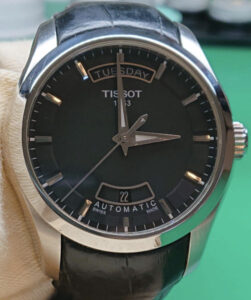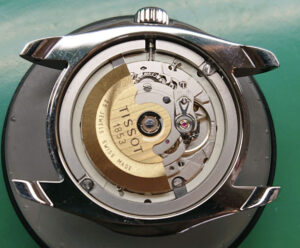We are experienced in the repair of almost every type and brand of watch here at WE Clark Watch Repairs. In order to repair watches to a high standard, we have invested in the best quality tools and equipment for our workshop. While you may find budget versions of some equipment, the calibration and quality is – speaking from experience – not the same.
One important part of watch servicing is cleanliness. A watch movement needs to be spotlessly clean to ensure it works to the highest possible standard. If it is not properly clean, the running of the watch will be adversely affected, which may result in poor timekeeping and shorter service intervals. There are different methods available for cleaning a watch movement, but the choice of professionals is a quality watch movement cleaning machine.
To use a watch movement cleaning machine, we first have to strip down the watch movement. It is important to fully disassemble the mechanism as if shortcuts are taken and it is left partially assembled, there is no way of being certain that it is fully clean (it’s also impossible to have fully checked some of the components for wear if they’re not disassembled and inspected). In our workshop we generally pre-clean movements by manually using pegwood and horological essence to clean a number of parts before they then go through the cleaning machine. This is another way we ensure absolute cleanliness.
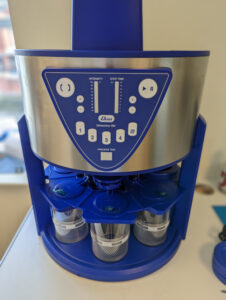
Once disassembled and pre-cleaned, the various parts are loaded into the cleaning basket which is attached to the cleaning machine itself. Watch cleaning machines come in various brands, makes and models. We have experience using a range of machines – from the vintage Elma Super Elite and L&R Tempo 400, through to modern industry standards like our current machines – the Elma Solvex RM and Greiner ACS 900. Each machine does things a little differently, though the principles are similar. The cleaning basket is immersed and rotated in a number of jars of cleaning fluids and rinse solutions, before finally being dried off.
Some machines like the Greiner use ultrasonics in one of the jars to help with the cleaning process. The use of ultrasonics in watch cleaning machines is cause for debate amongst some watchmakers, as at least with some vintage watches, the ultrasonics may cause parts like the pallets to come loose. Machines like the Elma Solvex RM do not use ultrasonics – indeed they use Elma’s alternative “vibrasonic” principle. In our experience both machines do a fantastic job and when combined with thorough disassembly and pre-cleaning, they ensure watch movements are thoroughly cleaned.
Suffice to say, if you trust us with the repair of your watch, it will be taken care of by expert watchmakers and repaired using the best quality tools and equipment. We are able to repair almost any watch and we offer a comprehensive watch repair service. We cater to clients all around the UK thanks to our fully insured freepost watch repairs service. As Business Partners of the British Horological Institute and a Feefo Platinum Trusted Service Award accredited business, you can be confident when dealing with us.
Yours sincerely
David Clark FGA DGA MJVA PJDip. PJGemDip.
Managing Director, JVA Registered Valuer®
W.E. Clark & Son Limited

